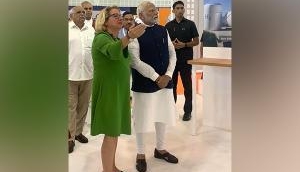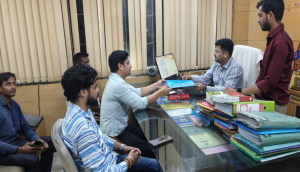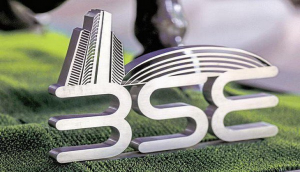Will Indian airlines be able to deal with increasing ATF prices?

The government has been working towards cost reduction to enable travel for the masses. This cost reduction, is part of a draft civil aviation policy. One of the major factors that have a bearing on cost structure and profitability is the price of Aviation Turbine Fuel (ATF).
It was only at the end of 2014 calender year that Indian aviation companies had started reporting good numbers.
Jet Airways returned to profitability during the end December 2014 quarter, with a modest net profit of Rs 3 crore, due to growth in revenue and an 11% cut in fuel expenses. This was Airline's first quarterly profit since December 2012.
Also read - Pull up your socks Maharaja: Air India is being a laggard
In the following quarter, another domestic airline, SpiceJet, came in the black with a net profit of Rs 22.51 crore. The company had reported losses for seven consecutive quarter prior to that.
Air India, which has been reporting consecutive losses for the last 9 years, recorded an operational profit of Rs 8 crore in 2015-16.
Aviation Turbine Fuel prices going up
The cycle of decline in the price of Aviation Turbine Fuel (ATF), began in Septmeber of 2014. This happened alongside the decline in international crude oil prices. In Februaury, 2016, the ATF prices had touched a low of Rs 35,126.82 Kilo Litre.
At present, the price of ATF in Delhi, is Rs 42,784 KL. Going forward the ATF price are likely to go up. In this scenario, the question is, will the aviation companies go into the red once again?
Fuel accounts for around 42% of an airlines operational cost in India. Between 2011 and 2014, a major reason for the losses of Indian airline companies, was the high cost of ATF in the country.
According to Mark Martin, funder & CEO, Martin Consulting, the companies will have to cut down on the strategy of offering discounts in air tickets."With the increase in the price of ATF the airlines would not be able to keep cheap flight tickets. Therefor a lot would depend on the customers' capacity to buy expensive ticket. The air traffic has gone up in the past one year and a lot of it was a result of cheap ticket prices."
But the chances are that in the absence of cheap tickets the customer base may not grow in the coming months as it did in the past.
According to the Directorate General of Civil Aviation (DGCA), Indian Airlines, registered a jump in passenger load of 20.34% in the period January-December 2015 and stood at 81.09 million, compared to 67.38 million, they had flown in corresponding period last year.
In case the passenger traffic growth comes down in 2016 due to higher ticket prices, only the toughest will survive.
According to Martin, "The Airline companies will have to work on various other parameters like Load factor, on time arrival, and break even load factor.It would be important to see that which flights are making profits at higher cost of ATF".
Here are some parameters from the past year that will give a peek into which companies have a better chance of surviving in a high ATF-price regime.
On-Time Performance
Indigo, the most profitable domestic airline in the country, maintained its good record for on-time performance (OTP), topping the list of Indian airlines during the January-December 2015 period.
Here are the airline-wise on-time performances:
1. Indigo - 83.8%
2. Jet Airways and Jet Lite - 79.98%
3. Air India - 73.40%
4. SpiceJet - 73.05%
When the ticket prices go up, what matters to consumers is the time saved during air-travel. A major reason for Indigo's profits in the past, has been its on-time performance, which allows the company to keep its aircrafts employed for more hours in a day.
Passenger Load Factor
Passenger load factor (PLF) is the measure of how many seats an airline manages to fill on its flights. The airlines should be able to fill as many seats as possible to recover their fixed cost per flight.
1. SpiceJet maintained an above 90% PLF average from May-2015 and ended the year with 89.8%.
2. IndiGo had an annual average of 83.7% with a high 91.9% and a low of 76.8%.
3. Air India's PLF stood at 79.84% during the same period.
Flight cancellation ratio
The flight cancellation ratio helps build up the customer confidence in the servies of an airlines.
IndiGo tops this list. Here's the full list:
1. IndiGo - 0.38%
2. Air Vistara (unlisted) - 0.52%
3. Air Asia (unlisted) - 0.57%
4. SpieceJet - 0.92%
5. Jet Airways - 0.97%
6. Air India - 1.45%
Apart from these parameters, the airline companies will have to work on other parameters, like aircraft maintenance cost, revenue per employee and servicing of the debt.
A brief decline in the cost of fuel has given breathing space to the Indian airline industry. Now as the price of ATF goes up in future, it would depend on the managements of airline companies to keep their operations profitable.
More in Catch -Air India's turnaround should put to rest demands for its privatisation
Air India pilots receive flying allowance, call off strike
First published: 24 May 2016, 8:42 IST






![BJP's Kapil Mishra recreates Shankar Mahadevan’s ‘Breathless’ song to highlight Delhi pollution [WATCH] BJP's Kapil Mishra recreates Shankar Mahadevan’s ‘Breathless’ song to highlight Delhi pollution [WATCH]](https://images.catchnews.com/upload/2022/11/03/kapil-mishra_240884_300x172.png)

![Anupam Kher shares pictures of his toned body on 67th birthday [MUST SEE] Anupam Kher shares pictures of his toned body on 67th birthday [MUST SEE]](https://images.catchnews.com/upload/2022/03/07/Anupam_kher_231145_300x172.jpg)






